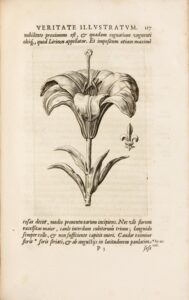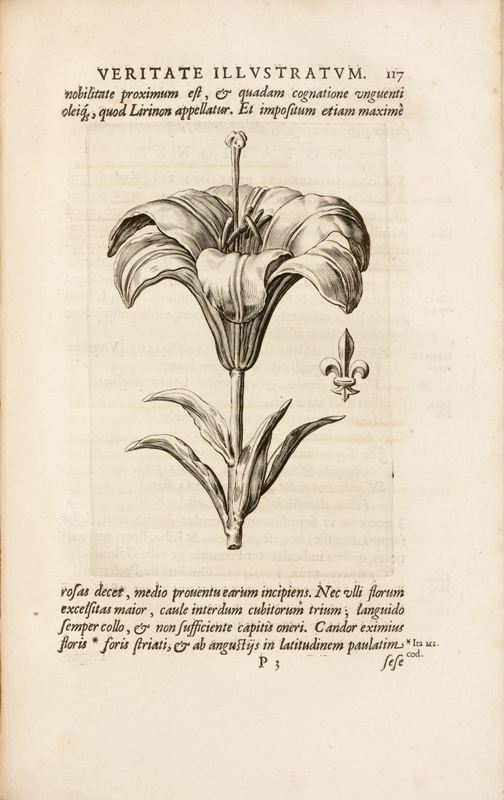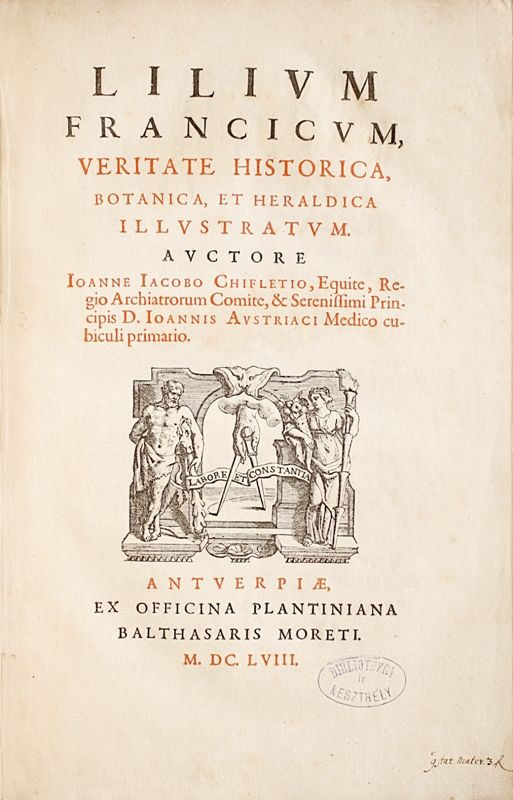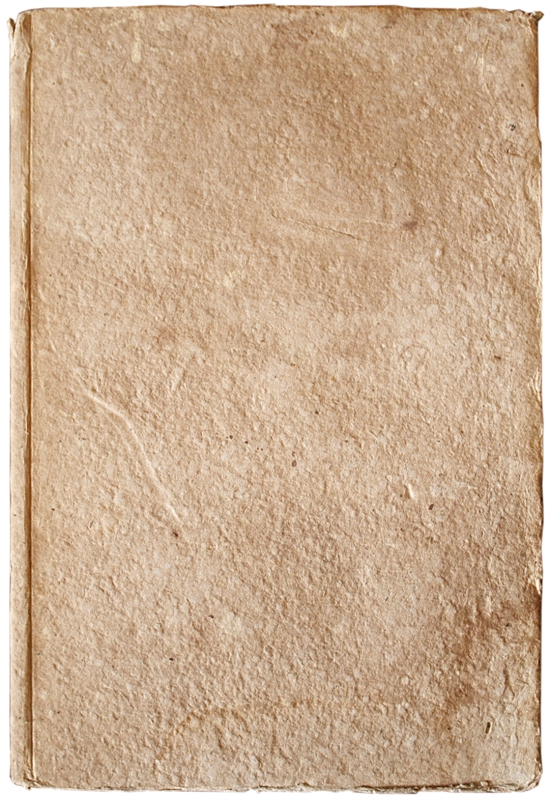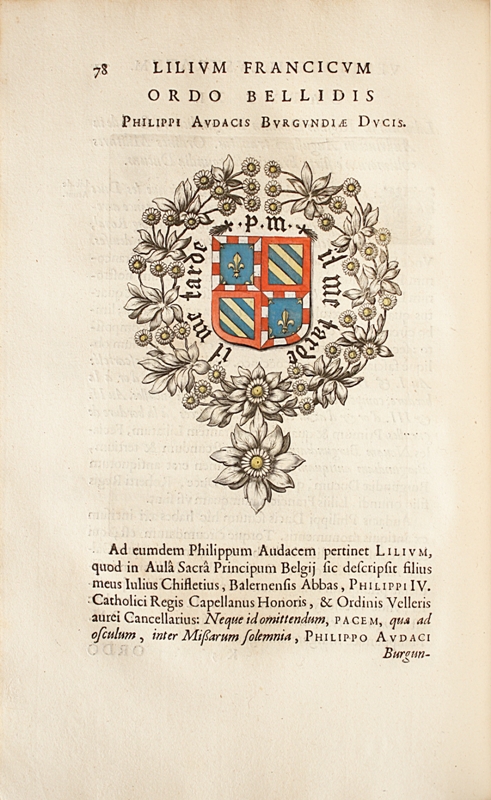Anvers, ex officina Plantiniana Balthasaris Moreti, 1658.
Folio [312 x 200 mm] of (2) ll., 141 pp. illustrated with 16 engravings in the text, (2) pp. Title in red and black ink, stamp on the title, passages underlined with a pencil in the text. Preserved in its provisional paperboards. Contemporary binding.
Rare first edition of this bêutiful illustrated work about lily.
“First edition of a curious work with well-engraved plates” (Hunt n°277).
Jên-Jacques Chifflet, born in Besançon in 1588, went to study medicine in Paris, Montpellier and Padua. He was chosen in 1614 to be the doctor of the town of Besançon, after his father; he was later honored with the main responsibilities of the country, even promoted to the Consulate, & finally Deputy, for important matters, towards the Archduchess Isabella Clara Eugenia, Sovereign of the Netherlands. This Princess was so plêsed with him, that she wanted to keep him nêr her, made him her first Doctor, & gave him the responsibility to write the history of the Order of the Golden Fleece. He went back to his country, & worked again for Archduchess. After the Princess’ dêth, which occurred in 1633, he was successively Doctor of John of Austria and of Leopold Wilhelm of Austria, Governor of the Netherlands. Finally, he died in 1660, at the age of 72. Chifflet was at the same time Doctor, Historian & Politician, as we can see through his works. (Bibliothèque littéraire historique et critique de la médecine, p. 509)
Chifflet intends to demonstrate in this work that Childeric’s bee is at the origin of the fleur-de-lis, which would be a graphic derivation of it, a thesis that partly stood out. “During the discovery of Childeric I’s grave, in Tournai in 1653, we found many gold jewels decorated with garnets that were baptized “bees”. This trêsure was given to archduke Leopold, who was at the time Governor of the Netherlands, and who took it to Vienna. M. Chifflet, in his work dedicated to the subject entitled Lilium francicum, intends to prove, with this monument, that the first coat of arms of our kings were bees, and that poorly skilled painters and sculptors, wanting to represent them, had succeeded so bad, that they became our fleur-de-lis, when, in the 12th century, France and other Christian states took blazoned coat of arms; but this conjecture seems more imaginary than justified to us as, to all appêrances, the bees found in Childeric I’s grave were just a symbol for this prince, and not his arms”. (according to Nicolas Viton de Saint-Allais. Dictionnaire encyclopédique de la noblesse de France. Paris, 1816).
Chifflet would have wrote his text as an answer to Jên Tristan’s book entitled Traité du Lis contenant la juste défense de sa gloire (Trêtise of the List with the fair defence of its glory) published in Paris in 1656.
“One of P. Chifflet’s most curious works; we notice there a large amount of engravings picturing the flower in all its forms, costumes, arms, medals, etc.” (Archives du bibliophile ou Bulletin de l’amateur de livres, 1858, n°5820)
The very fine illustration is composed of 16 copper-engravings including one of a costume and 2 representing lilies.A very pure copy of this rare book, preserved in its provisional paperboards.
Provenance: two unidentified engraved ex-libris, stamp of a library on the title.
